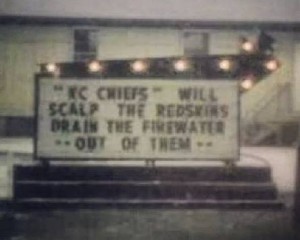As featured on eNews Park Forest.com, Dec 5, 2013
Washington, DC–(ENEWSPF)–December 5, 2013. It’s farm bill debate time—again. And as conferee members saddle up to the negotiation table to attempt yet another meeting of the minds before the winter recess, most of the public watching and waiting for word on a resolution are focused on issues like food stamps and milk.
What most are not waiting for and has not been at the forefront of the media and public discussion concerning the pending farm bill negotiations are the small but dangerous provisions of the House bill concerning the Federal Water Pollution Control Act (expanded and overhauled as the Clean Water Act (CWA) in 1972) and the U.S. Environmental Protection Agency’s (EPA) ability to regulate pesticides used near, over, and in water. It should be.
 Seeking to nullify the Sixth Circuit’s ruling in National Cotton Council v. EPA and the resulting general permit, sections 12323 and 100013 amend CWA to exclude pesticides from the law’s standards and its permitting requirements. Known as the National Pollution Discharge Elimination System (NPDES), CWA requires all point sources, which are discernible and discreet conveyances, to obtain either individual or general permits. Whether a point source must obtain an individual or general permit depends on the size of the point source and type of activity producing the pollutants. Regardless of whether it is a general permit or individual permit, an entity cannot pollute without a permit and in most cases can only permit in the amounts (called effluent limitations) and ways prescribed in the permit.
Seeking to nullify the Sixth Circuit’s ruling in National Cotton Council v. EPA and the resulting general permit, sections 12323 and 100013 amend CWA to exclude pesticides from the law’s standards and its permitting requirements. Known as the National Pollution Discharge Elimination System (NPDES), CWA requires all point sources, which are discernible and discreet conveyances, to obtain either individual or general permits. Whether a point source must obtain an individual or general permit depends on the size of the point source and type of activity producing the pollutants. Regardless of whether it is a general permit or individual permit, an entity cannot pollute without a permit and in most cases can only permit in the amounts (called effluent limitations) and ways prescribed in the permit.
Separate, but inextricably linked to the NPDES program, are CWA’s water quality standards, under which states are responsible for designating waterbody uses (such as swimmable or fishable) and setting criteria to protect those uses. If a water body fails to meet the established criteria for its use, then it is deemed impaired and the states, or EPA, if the state fails to act, must establish a Total Maximum Daily Load (TMDL), a kind of pollutant diet. The system comes full circle in that impaired waters with TMDLs can be integrated into the NPDES permits.
Neither CWA nor the NPDES program are perfect, but one need look no further than the fish we eat to understand the important role that this critical environmental framework plays in limiting human exposure to pesticides and other toxins.
CWA, Fish, and the Pesticide Connection
In the recently released Environmental Health Perspectives’ article, Meeting the Needs of the People: Fish Consumption Rates in the Pacific Northwest, the complexities of the CWA, its NPDES progam, and its water quality standards criteria are laid out in a disturbing tale of environmental justice and failing bureaucracies.
In short, Native Americans in the Pacific Northwest eat a lot of fish. It’s part of their culture and a way of life preserved in their legal and tribal rights, but they are facing increasing health risks due to the toxic chemicals in those fish. The solution to this problem seems fairly straight-forward: reduce the toxins in the water so that the levels in the fish are safe to eat. It’s a solution envisioned by CWA and its web of regulatory protections, however, as the article explains, “One of the variables used to calculate ambient water quality criteria is fish consumption rate.”
While the takeaway from the article is somewhat defeating and shows the far-reaching weaknesses of existing risk assessment methodologies, the underpinnings of the article —the connection between a water body’s water quality criteria, an entities NPDES permit, and the safety of the fish we put in our mouths— cannot be dismissed as irrelevant tales of woe. Whether the system is functioning perfectly or not, the point is that a system exists that contemplates the risks inherent to consuming toxin-laced fish and has the potential to protect the general consuming public.
From Fish Back to the Farm Bill
What does not have this ability is the Federal, Insecticide, Rodenticide, and Act (FIFRA). It is this federal framework, however, on which supporters of the House provision hang their hats and point to as the already-in-place protective standard capable of preventing water pollution from pesticides. Beyond Pesticides has debunked this argument in more ways than one. Other environmental advocacy groups have also pointed out that the sky has not fallen since EPA’s implementation of the general pesticide permit under CWA.
The Clean Water Act is intended to ensure that every community, from tribe to urban neighborhood, has the right to enjoy fishable and swimmable bodies of water. There is a lot of work still to be done to improve the nation’s waters and protect the health of people dependent on those waters. Without the Clean Water Act, there are no common sense backstops or enforcement mechanisms for reducing direct applications of pesticides to waterways. It may not be perfect, but it is better than nothing, which would be the effect of the House farm bill. We can’t afford to lose these protections.
Tell your Senators to oppose any efforts to undermine the Clean Water Act.
For more information, read our factsheet, Clearing up the Confusion Surrounding the New NPDES General Permit and visit our Threatened Waters page.
Sources: Environmental Health Perspectives, Natural Resources Defense Council, U.S. Environmental Protection Agency, http://www.beyondpesticides.org/
All unattributed positions and opinions in this piece are those of Beyond Pesticides.



















 Seeking to nullify the Sixth Circuit’s ruling in National Cotton Council v. EPA and the resulting general permit, sections 12323 and 100013 amend CWA to exclude pesticides from the law’s standards and its permitting requirements. Known as the National Pollution Discharge Elimination System (NPDES), CWA requires all point sources, which are discernible and discreet conveyances, to obtain either individual or general permits. Whether a point source must obtain an individual or general permit depends on the size of the point source and type of activity producing the pollutants. Regardless of whether it is a general permit or individual permit, an entity cannot pollute without a permit and in most cases can only permit in the amounts (called effluent limitations) and ways prescribed in the permit.
Seeking to nullify the Sixth Circuit’s ruling in National Cotton Council v. EPA and the resulting general permit, sections 12323 and 100013 amend CWA to exclude pesticides from the law’s standards and its permitting requirements. Known as the National Pollution Discharge Elimination System (NPDES), CWA requires all point sources, which are discernible and discreet conveyances, to obtain either individual or general permits. Whether a point source must obtain an individual or general permit depends on the size of the point source and type of activity producing the pollutants. Regardless of whether it is a general permit or individual permit, an entity cannot pollute without a permit and in most cases can only permit in the amounts (called effluent limitations) and ways prescribed in the permit.




